- H-23/ B Abul Fazal Enclave, New Delhi - 110025, INDIA
Call Us (Indian)
(+91 ) 7827791242
Call Us (International)
(+91 ) 7827791242
Email Us
info@globlaregenex.com
(+91 ) 7827791242
(+91 ) 7827791242
info@globlaregenex.com
Tennis elbow and golfer’s elbow are the most common overuse injuries that damage the elbow tendons and cause pain and discomfort. Despite their names, this disorder can arise from a number of repetitive arm motions and activities, even in people who do not play golf and tennis
Tennis elbow is often referred to as lateral epicondylitis in medical terminology, and it is characterized by inflammation or degeneration of the extensor carpi radialis brevis tendon, which is located on the outside side of the elbow. Repetitive gripping, twisting, or lifting actions are usually the cause of the ailment. Which results in microtears in the tendon and pain on the outside of the elbow. The wrist or forearm may become weak, there may be pain or soreness while holding objects, and doing tasks requiring wrist mobility may become challenging.
The flexor tendons that connect to the medial epicondyle on the inner side of the elbow are particularly affected by the golfer’s elbow, also known as medial epicondylitis. Like tennis elbow, golfer’s elbow is also caused by repetitive strain on the tendons, which is frequently the result of physical labor, racquet sports, or golfing. The inner side of the elbow hurts and becomes painful;
other symptoms include weakness while gripping or squeezing objects and pain when bending the wrists or fingers.
Physical therapy, activity modification, rest, and anti-inflammatory drugs are commonly used in the treatment of tennis elbow and golfer’s elbow and golfer’s elbow in order to minimize pain and inflammation. In more extreme situations, a recommendation for surgery or corticosteroid injections may be made in order to reduce symptoms and accelerate healing.
Furthermore, preventing injuries from happening again can be achieved with the use of preventative techniques, ergonomic adjustments, and strengthening exercises. People with tennis elbow or golfer’s elbow must have early intervention and appropriate care in order to minimize discomfort and restore function.
Golfer’s elbow and tennis elbow usually relate to the level or phase of the condition. The kinds of golfer’s and tennis elbow are given below:
Acute vs. Chronic: depending on how long symptoms last, tennis elbow and golfer’s elbow can be categorized. Acute instances are defined as a quick start of inflammation and discomfort, typically brought on by accident or effort. Chronic instances, which are frequently brought on by recurrent stress or insufficient healing, entail symptoms that are chronic or recurrent and endure for several weeks or months.
Mild, Moderate, and Severe: the three categories mild, mobility, and severe are determined by the level of symptoms and functional restrictions. Mild instances provide little discomfort and don’t really interfere with day-to-day activities. Mild instances may result in grip strength or arm mobility limits in addition to mild discomfort. Severe instances are defined by severe pain, substantial functional impairment, and trouble with daily living.
Stages of Healing: Tennis elbow and golfer’s elbow can occasionally be categorized according to tissue pathology or the stage of healing. These stages include the inflammatory, proliferative, and remodeling phases, during which new tissue grows and becomes stronger.
Related Conditions: Related conditions or contributing factors are occasionally used to categorize tennis elbow and golfer’s elbow. Cases might be categorized, for instance, as subsequent to other medical disorders such as tendon degeneration or arthritis, or as connected to employment or sports.
The main causes of tendonitis, which includes both tennis and golfer’s elbow, are overuse and repetitive stress on the tendons in the elbow area. Given below are the causes of tennis and golfer’s elbow:
Tennis Elbow (Lateral Epicondylitis):
Golfer’s Elbow (Medial Epicondylitis):
Although golfer’s elbow and tennis elbow are frequently linked to the corresponding sports from which they get their names, it is vital to remember that these conditions can also affect those who don’t play these sports. Tendonitis can result from any repetitive arm motions or activities that strain the elbow tendons. In order to prevent and manage these diseases, it is imperative to use appropriate techniques, equipment, and ergonomics along with sufficient rest and recuperation.
The severity of the symptoms associated with golfer’s elbow (medial epicondylitis) and tennis elbow (lateral epicondylitis) might vary, however, they frequently include:
Tennis Elbow (Lateral Epicondylitis):
Pain: The main symptom is discomfort at the lateral epicondyle, which is the bony protrusion on the outside side of the elbow. When grasping, lifting, or twisting, in particular, the discomfort may go down the forearm.
Tenderness: Touching the region around the lateral epicondyle may cause discomfort since it is sensitive to pressure.
Stiffness: One may have elbow joint stiffness, particularly in the morning or after periods of inactivity.
Weakness: Some people may have a decrease in their grip strength, which makes it challenging to carry out duties that call for lifting or holding things.
Pain with Activities: Activities involving grasping, lifting, or repeated wrist extension—like using tools, playing racquet sports, or shaking hands—usually make the pain worse.
Painful Extension: When trying to extend the wrist against the opposition, as in lifting something or hitting a backhand stroke in tennis, pain may be very apparent.
Golfer’s Elbow (Medial Epicondylitis):
Pain: Ankle discomfort, particularly at the medial epicondyle (the bony protrusion on the inside side of the elbow), is the main symptom. Forearm discomfort is possible to radiate, particularly while holding or lifting objects.
Tenderness: The region around the medial epicondyle may be sensitive to pressure and tender, and applying pressure within may make the condition worse.
Weakness: It may be evident that there is a lack of grip strength and that there are difficulties with grasping and lifting jobs.
Pain with Activities: Activities involving grasping, lifting, or repeated wrist flexion—like throwing, gardening, or swinging a golf club—usually make the pain worse.
Painful Flexion: Flexing the wrist against resistance or engaging in actions that require bending the wrist inward, such as twisting a doorknob or using a screwdriver, may make pain worse.
Stiffness: Some people may have elbow joint stiffness, especially in the morning or after extended periods of inactivity.
In order to properly manage tennis elbow and golfer’s elbow, anybody experiencing chronic or severe elbow discomfort must get a medical assessment. At Global Regenex we provide appropriate diagnosis and therapy.
The diagnosis of golfer’s elbow (medial epicondylitis) and tennis elbow (lateral epicondylitis) usually entails a physical examination, radiological investigations, and medical history. Here is a possible diagnosis for each:
Medical History: The doctor will ask about the patient’s symptoms, such as where, when, and how much pain they are experiencing, as well as any movements or activities that either make their symptoms worse or better. A diagnosis of tennis or golfer’s elbow may be suggested by a history of recent or repetitive arm movements, involvement in sports, or occupational activities.
Physical Examination: The medical professional will check the elbow’s range of motion, pain, and edema during the physical examination. To replicate the pain and evaluate the integrity of the impacted tendons, specific tests can be conducted, such as Cozen’s test for tennis elbow or the Golfer’s elbow test for golfer’s elbow.
Imaging Studies: Although imaging investigations are not necessarily required for a diagnosis, they could be requested to rule out other possible reasons for elbow discomfort or to confirm the existence of tendon injury. While ultrasonography or magnetic resonance imaging (MRI) may be used to see soft tissue structures, such as the tendons and surrounding tissues, X-rays can assist in identifying bone abnormalities, such as bone spurs or fractures.
Differential Diagnosis: The symptoms of tennis or golfer’s elbow may be confused with those of other conditions, such as arthritis, nerve compression syndromes (such as cubital tunnel syndrome), or transferred pain from the shoulder or neck. The medical professional will take these possibilities into account and might run extra tests or assessments to help distinguish between different conditions.
By using a mix of these tests and carefully examining symptoms and medical history, doctors can correctly identify tennis and golfer’s elbow in patients and come up with the right treatment plan.
Regenerative therapy known as platelet-rich plasma (PRP) treatment has been utilized to treat tennis elbow(lateral epicondylitis) and golfer’s elbow (medial epicondylitis) in certain instances. The following conditions can benefit from PRP treatment:
Preparation of PRP: To produce platelets and growth factors from other blood components, a tiny sample of the patient’s blood is drawn and centrifuged. This process yields PRP. The damaged elbow area is then injected with the concentrated platelet-rich plasma.
Mechanism of Action: Platelets, which are abundant in growth factors and other bioactive proteins that support tissue repair and regeneration, make up a large portion of PRP. PRP injections into injured soft tissue or tendons have the potential to improve tissue regeneration, lower inflammation, and activate the body’s own healing mechanisms.
Injection Technique: PRP injections are usually given under ultrasound supervision to guarantee accurate PRP delivery to the injured elbow region. Depending on the severity of the ailment and the patient’s reaction to treatment, the injection may be given all at once or over the course of many weeks.
Post-Injection Rehabilitation: In order to promote optimal healing, patients may be encouraged to engage in a period of rest and limited activity following PRP treatment. To support rehabilitation and avoid re-injury, physical therapy exercises, stretching, and strengthening regimens may also be recommended.
Effectiveness: Results from clinical trials assessing the efficacy of platelet-rich plasma (PRP) treatment for tennis elbow and golfer’s elbow have been inconsistent. While some research has shown that PRP injections reduce pain and increase function, other studies have revealed little benefit when compared to place or other therapies. Variations in injection procedures, outcome measures, and patient groups may be the cause of the study’s inconsistent results
Considerations: PRP therapy is usually regarded as safe, with little chance of problems or unfavorable effects. PRP injections could come with hazards, though, like any medical procedure: bleeding, infection, and nerve damage. To find out if PRP treatment is a good fit for their condition, patients should talk to their doctor about the possible risks and advantages.
Overall, additional research is required to completely understand the usefulness of PRP treatment and determine the best way to use it in the management of tennis elbow and golfer’s elbow, even though it may benefit certain patients.
Therapy
PRP treatment is becoming a prior choice for treating many medical conditions including Tennis and golfer’s elbow. If you are taking the treatment from Global Regenx, then it will be a three days procedure which includes:
Day 1:
Day 2:
Day 3:
Note To Remember
What is the difference between a tennis elbow and a golfer’s elbow?
While a golfer’s elbow hurts on the inside of the elbow and down the arm, a tennis elbow is more painful and uncomfortable on the outside of the elbow. Additionally, tingling or numbness in the fingers may accompany a golfer’s elbow.
What Are The Symptoms Of Golfer’s Elbow?
Some of the common symptoms of a golfer’s elbow are given below:
What is the immediate treatment of a golfer’s elbow?
Apply ice packs to your elbow three or four times a day for 15 to 20 minutes at a time. Use a small cloth to wrap the ice packs over your skin to protect it. Applying ice to your inner elbow for five minutes at a time, two or three times a day may be beneficial. You can use PRP treatment to treat your tennis and golfer’s elbow fast.
What is the main cause of tennis elbow?
The main cause of tennis elbow is overusing your forearm as a result of hard or repeated activities. It can also occasionally happen if your elbow is knocked or banged.
PRP therapy for golfer’s elbow (medial epicondylitis) and tennis elbow (lateral epicondylitis) can improve symptoms differently in each patient, but some improvements might be:
For tennis elbow (lateral epicondylitis) and golfer’s elbow (medial epicondylitis), the mechanism of improvement after PRP (platelet-rich plasma) therapy comprises many critical processes:
Encouragement of Tissue Repair: Platelets, which are abundant in growth factors including PDGF, TGF-beta, and VEGF (vascular endothelial growth factor), are concentrated in high concentrations in platelet-derived plasma. By encouraging the proliferation and differentiation of cells involved in the healing process, such as tendon fibroblasts and endothelial cells, these growth factors play a critical role in stimulating tissue repair and regeneration.
Reduction of Inflammation: Tennis elbow and golfer’s elbow are examples of tendon injuries that are characterized by chronic inflammation. Through the release of anti-inflammatory cytokines and the inhibition of pro-inflammatory mediators, PRP therapy has been demonstrated to modify the inflammatory response. This lessens discomfort, slows down the chain reaction of inflammation, and improves the conditions for tissue repair.
Angiogenesis: The components in PRP encourage the growth of new blood vessels (angiogenesis) in the tissue that has been wounded. Increased oxygenation, nutrition supply, and the elimination of metabolic waste products are all made possible by improved blood flow to the injured region. These processes are critical for tissue regeneration and repair.
Modulation of Matrix Remodelling: PRP can change how the wounded tendon’s extracellular matrix (ECM) is remodeled. This process improves tissue organization, strength, and function by breaking down scar tissue and depositing new collagen fibers.
Pain Relief: PRP therapy has been shown to help those with golfer’s elbow and tennis elbow feel less pain. Although the precise processes causing this pain alleviation remain unclear, it is believed to entail a confluence of decreased inflammation, enhanced tissue repair, and altered pain signaling pathways.
PRP therapy for golfer’s elbow and tennis elbow often focuses on many stages of the healing process, including tissue restoration, inflammation reduction, and pain and function improvement. For those suffering from these crippling tendon injuries, platelet-derived platelets (PRP) provide a potentially effective treatment option by using the regeneration capacity of growth factors and platelets.

Tennis elbow and golfer’s elbow are the most common overuse injuries that damage the elbow tendons and cause pain and discomfort. Despite their names, this disorder can arise from a number of repetitive arm motions and activities, even in people who do not play golf and tennis
Tennis elbow is often referred to as lateral epicondylitis in medical terminology, and it is characterized by inflammation or degeneration of the extensor carpi radialis brevis tendon, which is located on the outside side of the elbow. Repetitive gripping, twisting, or lifting actions are usually the cause of the ailment. Which results in microtears in the tendon and pain on the outside of the elbow. The wrist or forearm may become weak, there may be pain or soreness while holding objects, and doing tasks requiring wrist mobility may become challenging.
The flexor tendons that connect to the medial epicondyle on the inner side of the elbow are particularly affected by the golfer’s elbow, also known as medial epicondylitis. Like tennis elbow, golfer’s elbow is also caused by repetitive strain on the tendons, which is frequently the result of physical labor, racquet sports, or golfing. The inner side of the elbow hurts and becomes painful;
other symptoms include weakness while gripping or squeezing objects and pain when bending the wrists or fingers.
Physical therapy, activity modification, rest, and anti-inflammatory drugs are commonly used in the treatment of tennis elbow and golfer’s elbow and golfer’s elbow in order to minimize pain and inflammation. In more extreme situations, a recommendation for surgery or corticosteroid injections may be made in order to reduce symptoms and accelerate healing.
Furthermore, preventing injuries from happening again can be achieved with the use of preventative techniques, ergonomic adjustments, and strengthening exercises. People with tennis elbow or golfer’s elbow must have early intervention and appropriate care in order to minimize discomfort and restore function.
Golfer’s elbow and tennis elbow usually relate to the level or phase of the condition. The kinds of golfer’s and tennis elbow are given below:
Acute vs. Chronic: depending on how long symptoms last, tennis elbow and golfer’s elbow can be categorized. Acute instances are defined as a quick start of inflammation and discomfort, typically brought on by accident or effort. Chronic instances, which are frequently brought on by recurrent stress or insufficient healing, entail symptoms that are chronic or recurrent and endure for several weeks or months.
Mild, Moderate, and Severe: the three categories mild, mobility, and severe are determined by the level of symptoms and functional restrictions. Mild instances provide little discomfort and don’t really interfere with day-to-day activities. Mild instances may result in grip strength or arm mobility limits in addition to mild discomfort. Severe instances are defined by severe pain, substantial functional impairment, and trouble with daily living.
Stages of Healing: Tennis elbow and golfer’s elbow can occasionally be categorized according to tissue pathology or the stage of healing. These stages include the inflammatory, proliferative, and remodeling phases, during which new tissue grows and becomes stronger.
Related Conditions: Related conditions or contributing factors are occasionally used to categorize tennis elbow and golfer’s elbow. Cases might be categorized, for instance, as subsequent to other medical disorders such as tendon degeneration or arthritis, or as connected to employment or sports.
The main causes of tendonitis, which includes both tennis and golfer’s elbow, are overuse and repetitive stress on the tendons in the elbow area. Given below are the causes of tennis and golfer’s elbow:
Tennis Elbow (Lateral Epicondylitis):
Golfer’s Elbow (Medial Epicondylitis):
Although golfer’s elbow and tennis elbow are frequently linked to the corresponding sports from which they get their names, it is vital to remember that these conditions can also affect those who don’t play these sports. Tendonitis can result from any repetitive arm motions or activities that strain the elbow tendons. In order to prevent and manage these diseases, it is imperative to use appropriate techniques, equipment, and ergonomics along with sufficient rest and recuperation.
The diagnosis of golfer’s elbow (medial epicondylitis) and tennis elbow (lateral epicondylitis) usually entails a physical examination, radiological investigations, and medical history. Here is a possible diagnosis for each:
Medical History: The doctor will ask about the patient’s symptoms, such as where, when, and how much pain they are experiencing, as well as any movements or activities that either make their symptoms worse or better. A diagnosis of tennis or golfer’s elbow may be suggested by a history of recent or repetitive arm movements, involvement in sports, or occupational activities.
Physical Examination: The medical professional will check the elbow’s range of motion, pain, and edema during the physical examination. To replicate the pain and evaluate the integrity of the impacted tendons, specific tests can be conducted, such as Cozen’s test for tennis elbow or the Golfer’s elbow test for golfer’s elbow.
Imaging Studies: Although imaging investigations are not necessarily required for a diagnosis, they could be requested to rule out other possible reasons for elbow discomfort or to confirm the existence of tendon injury. While ultrasonography or magnetic resonance imaging (MRI) may be used to see soft tissue structures, such as the tendons and surrounding tissues, X-rays can assist in identifying bone abnormalities, such as bone spurs or fractures.
Differential Diagnosis: The symptoms of tennis or golfer’s elbow may be confused with those of other conditions, such as arthritis, nerve compression syndromes (such as cubital tunnel syndrome), or transferred pain from the shoulder or neck. The medical professional will take these possibilities into account and might run extra tests or assessments to help distinguish between different conditions.
By using a mix of these tests and carefully examining symptoms and medical history, doctors can correctly identify tennis and golfer’s elbow in patients and come up with the right treatment plan.
The severity of the symptoms associated with golfer’s elbow (medial epicondylitis) and tennis elbow (lateral epicondylitis) might vary, however, they frequently include:
Tennis Elbow (Lateral Epicondylitis):
Pain: The main symptom is discomfort at the lateral epicondyle, which is the bony protrusion on the outside side of the elbow. When grasping, lifting, or twisting, in particular, the discomfort may go down the forearm.
Tenderness: Touching the region around the lateral epicondyle may cause discomfort since it is sensitive to pressure.
Stiffness: One may have elbow joint stiffness, particularly in the morning or after periods of inactivity.
Weakness: Some people may have a decrease in their grip strength, which makes it challenging to carry out duties that call for lifting or holding things.
Pain with Activities: Activities involving grasping, lifting, or repeated wrist extension—like using tools, playing racquet sports, or shaking hands—usually make the pain worse.
Painful Extension: When trying to extend the wrist against the opposition, as in lifting something or hitting a backhand stroke in tennis, pain may be very apparent.
Golfer’s Elbow (Medial Epicondylitis):
Pain: Ankle discomfort, particularly at the medial epicondyle (the bony protrusion on the inside side of the elbow), is the main symptom. Forearm discomfort is possible to radiate, particularly while holding or lifting objects.
Tenderness: The region around the medial epicondyle may be sensitive to pressure and tender, and applying pressure within may make the condition worse.
Weakness: It may be evident that there is a lack of grip strength and that there are difficulties with grasping and lifting jobs.
Pain with Activities: Activities involving grasping, lifting, or repeated wrist flexion—like throwing, gardening, or swinging a golf club—usually make the pain worse.
Painful Flexion: Flexing the wrist against resistance or engaging in actions that require bending the wrist inward, such as twisting a doorknob or using a screwdriver, may make pain worse.
Stiffness: Some people may have elbow joint stiffness, especially in the morning or after extended periods of inactivity.
In order to properly manage tennis elbow and golfer’s elbow, anybody experiencing chronic or severe elbow discomfort must get a medical assessment. At Global Regenex we provide appropriate diagnosis and therapy.
PRP treatment is becoming a prior choice for treating many medical conditions including Tennis and golfer’s elbow. If you are taking the treatment from Global Regenx, then it will be a three days procedure which includes:
Day 1:
Day 2:
Day 3:
Note To Remember
Regenerative therapy known as platelet-rich plasma (PRP) treatment has been utilized to treat tennis elbow(lateral epicondylitis) and golfer’s elbow (medial epicondylitis) in certain instances. The following conditions can benefit from PRP treatment:
Preparation of PRP: To produce platelets and growth factors from other blood components, a tiny sample of the patient’s blood is drawn and centrifuged. This process yields PRP. The damaged elbow area is then injected with the concentrated platelet-rich plasma.
Mechanism of Action: Platelets, which are abundant in growth factors and other bioactive proteins that support tissue repair and regeneration, make up a large portion of PRP. PRP injections into injured soft tissue or tendons have the potential to improve tissue regeneration, lower inflammation, and activate the body’s own healing mechanisms.
Injection Technique: PRP injections are usually given under ultrasound supervision to guarantee accurate PRP delivery to the injured elbow region. Depending on the severity of the ailment and the patient’s reaction to treatment, the injection may be given all at once or over the course of many weeks.
Post-Injection Rehabilitation: In order to promote optimal healing, patients may be encouraged to engage in a period of rest and limited activity following PRP treatment. To support rehabilitation and avoid re-injury, physical therapy exercises, stretching, and strengthening regimens may also be recommended.
Effectiveness: Results from clinical trials assessing the efficacy of platelet-rich plasma (PRP) treatment for tennis elbow and golfer’s elbow have been inconsistent. While some research has shown that PRP injections reduce pain and increase function, other studies have revealed little benefit when compared to place or other therapies. Variations in injection procedures, outcome measures, and patient groups may be the cause of the study’s inconsistent results
Considerations: PRP therapy is usually regarded as safe, with little chance of problems or unfavorable effects. PRP injections could come with hazards, though, like any medical procedure: bleeding, infection, and nerve damage. To find out if PRP treatment is a good fit for their condition, patients should talk to their doctor about the possible risks and advantages.
Overall, additional research is required to completely understand the usefulness of PRP treatment and determine the best way to use it in the management of tennis elbow and golfer’s elbow, even though it may benefit certain patients.
Therapy
What is the difference between a tennis elbow and a golfer’s elbow?
While a golfer’s elbow hurts on the inside of the elbow and down the arm, a tennis elbow is more painful and uncomfortable on the outside of the elbow. Additionally, tingling or numbness in the fingers may accompany a golfer’s elbow.
What Are The Symptoms Of Golfer’s Elbow?
Some of the common symptoms of a golfer’s elbow are given below:
What is the immediate treatment of a golfer’s elbow?
Apply ice packs to your elbow three or four times a day for 15 to 20 minutes at a time. Use a small cloth to wrap the ice packs over your skin to protect it. Applying ice to your inner elbow for five minutes at a time, two or three times a day may be beneficial. You can use PRP treatment to treat your tennis and golfer’s elbow fast.
What is the main cause of tennis elbow?
The main cause of tennis elbow is overusing your forearm as a result of hard or repeated activities. It can also occasionally happen if your elbow is knocked or banged.
PRP therapy for golfer’s elbow (medial epicondylitis) and tennis elbow (lateral epicondylitis) can improve symptoms differently in each patient, but some improvements might be:
For tennis elbow (lateral epicondylitis) and golfer’s elbow (medial epicondylitis), the mechanism of improvement after PRP (platelet-rich plasma) therapy comprises many critical processes:
Encouragement of Tissue Repair: Platelets, which are abundant in growth factors including PDGF, TGF-beta, and VEGF (vascular endothelial growth factor), are concentrated in high concentrations in platelet-derived plasma. By encouraging the proliferation and differentiation of cells involved in the healing process, such as tendon fibroblasts and endothelial cells, these growth factors play a critical role in stimulating tissue repair and regeneration.
Reduction of Inflammation: Tennis elbow and golfer’s elbow are examples of tendon injuries that are characterized by chronic inflammation. Through the release of anti-inflammatory cytokines and the inhibition of pro-inflammatory mediators, PRP therapy has been demonstrated to modify the inflammatory response. This lessens discomfort, slows down the chain reaction of inflammation, and improves the conditions for tissue repair.
Angiogenesis: The components in PRP encourage the growth of new blood vessels (angiogenesis) in the tissue that has been wounded. Increased oxygenation, nutrition supply, and the elimination of metabolic waste products are all made possible by improved blood flow to the injured region. These processes are critical for tissue regeneration and repair.
Modulation of Matrix Remodelling: PRP can change how the wounded tendon’s extracellular matrix (ECM) is remodeled. This process improves tissue organization, strength, and function by breaking down scar tissue and depositing new collagen fibers.
Pain Relief: PRP therapy has been shown to help those with golfer’s elbow and tennis elbow feel less pain. Although the precise processes causing this pain alleviation remain unclear, it is believed to entail a confluence of decreased inflammation, enhanced tissue repair, and altered pain signaling pathways.
PRP therapy for golfer’s elbow and tennis elbow often focuses on many stages of the healing process, including tissue restoration, inflammation reduction, and pain and function improvement. For those suffering from these crippling tendon injuries, platelet-derived platelets (PRP) provide a potentially effective treatment option by using the regeneration capacity of growth factors and platelets.


After resting the arm for around six weeks, the majority of golfer’s elbow patients heal without surgery. The good news is that you can promote the healing of your tendons by following a few easy measures each day. However, if a golfer’s elbow is not addressed, it may result in long-term harm such as grip weakness, persistent discomfort, and limited range of motion in the elbow. You can also take PRP treatment for your tennis and golfer’s elbow.
Stem Cell Therapy for Heart Disease | Stem Cell Therapy for Stroke Disease
Introduction of Stem Cell Therapy | Stem Cell Therapy for Spinal Cord Injury




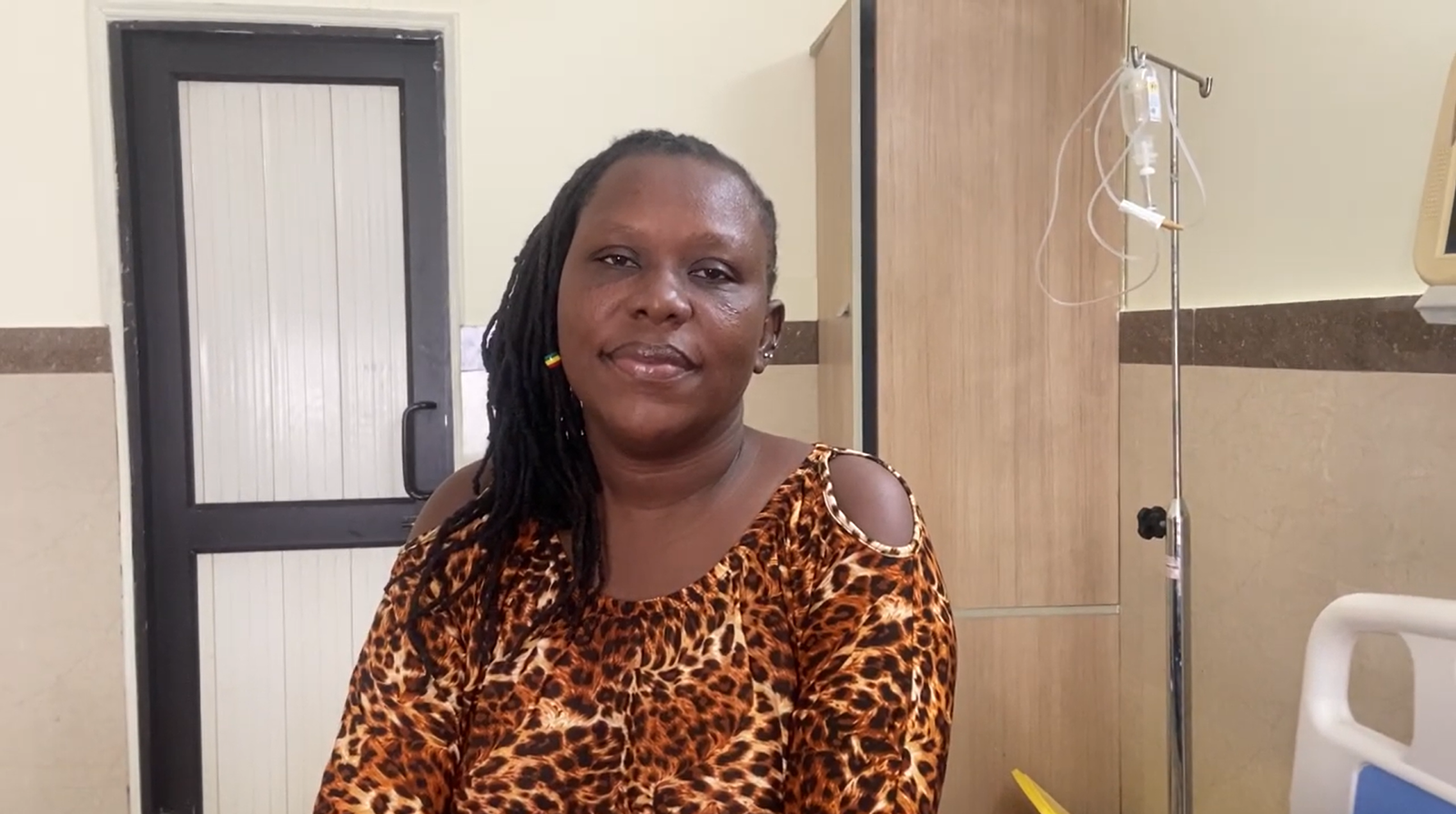
Stem cell therapy for infertility has given us renewed hope. The expertise and..Read More…
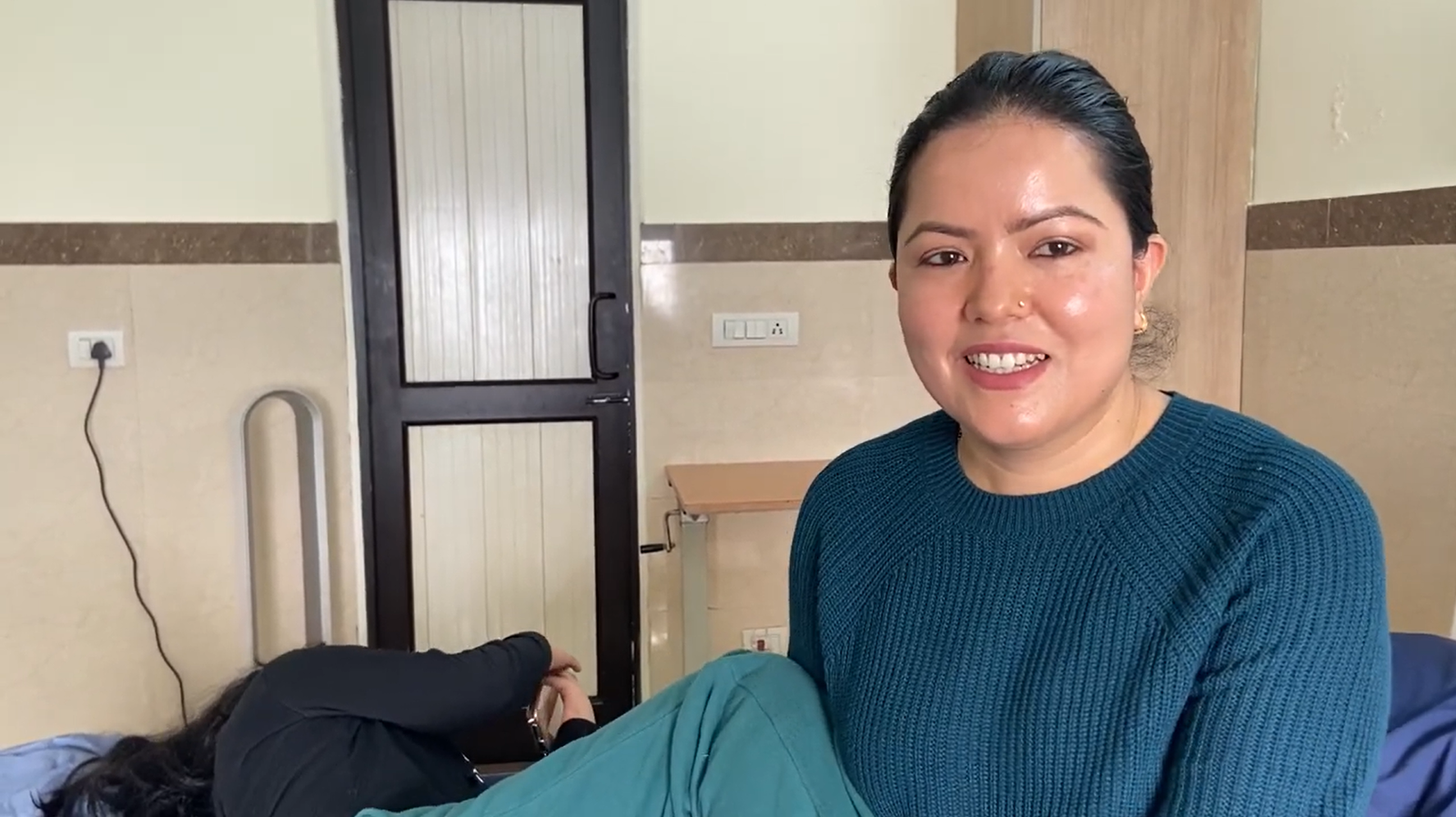
The stem cell treatment for my neurological disease ha.. Read More
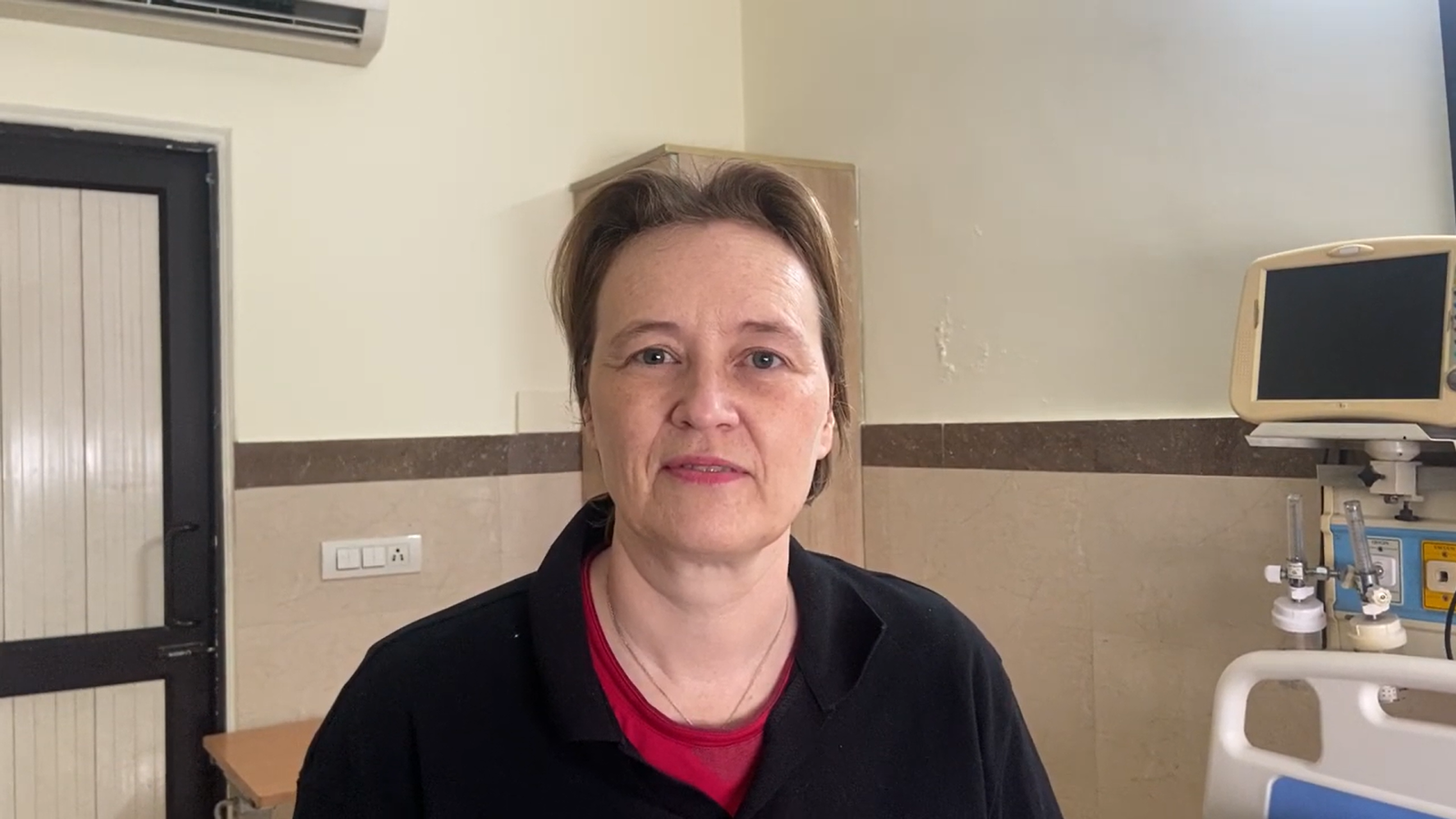
The stem cell treatment for my Chronic Fatigue Syndrome has been transformative… Read more….
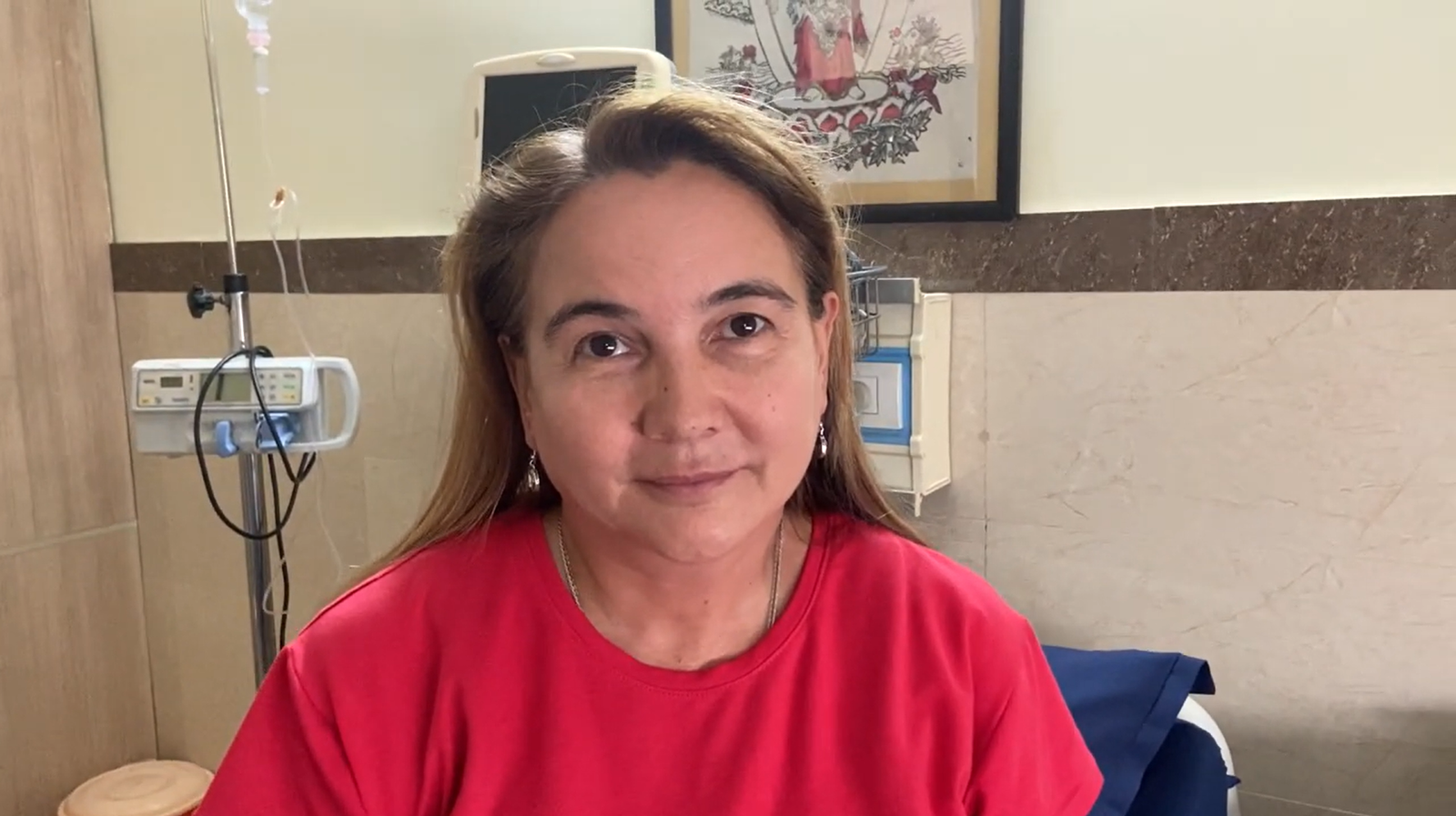
The expert care and attention I received have made managing my condition much easier.. Read
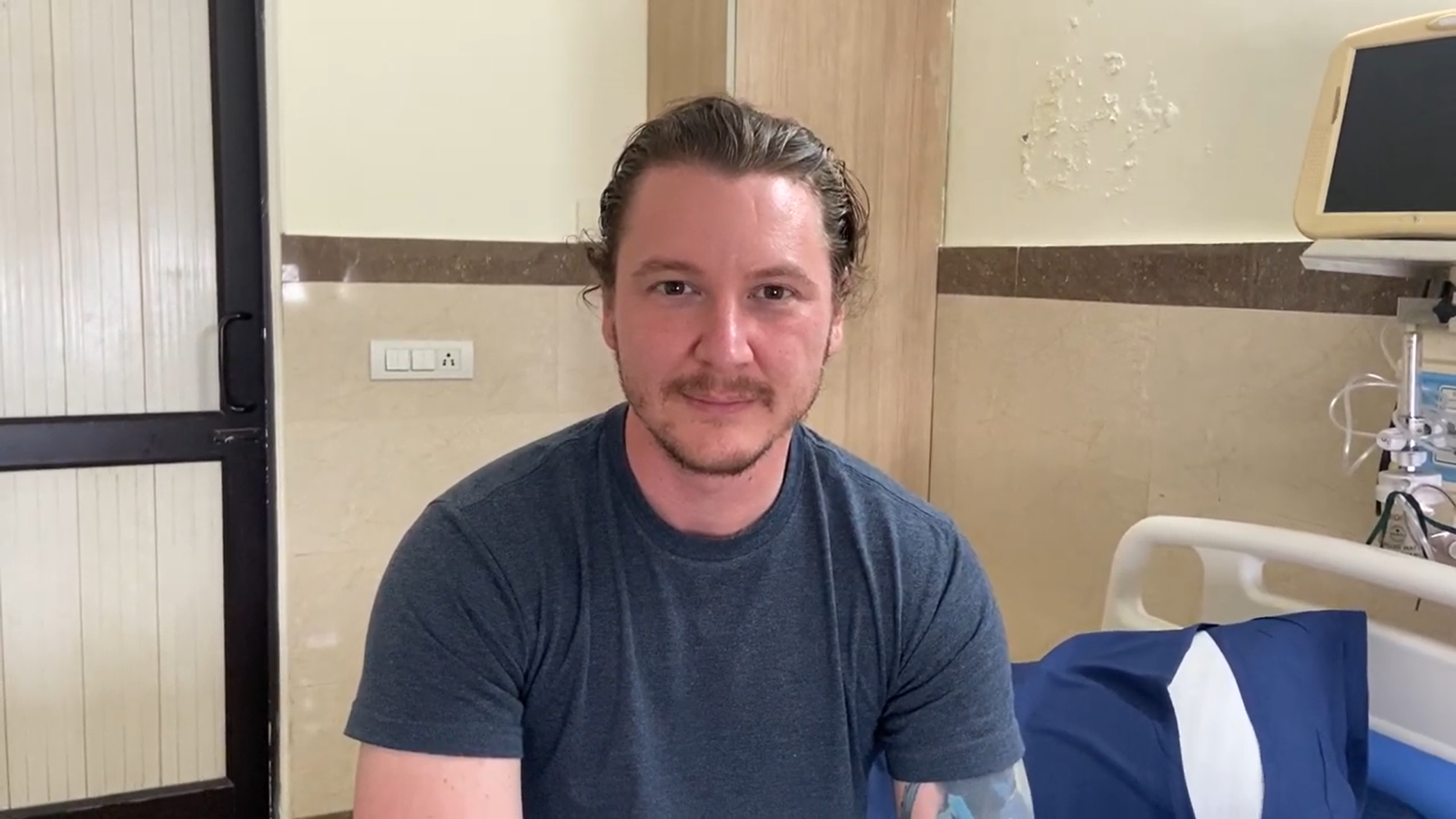
The stem cell treatment for my shoulder pain provided remarkable relief.. Read More…

(+91 ) 7827791242
(+91 ) 7827791242
info@globlaregenex.com
H-23/ B Abul Fazal Enclave, New Delhi - 110025, INDIA